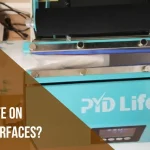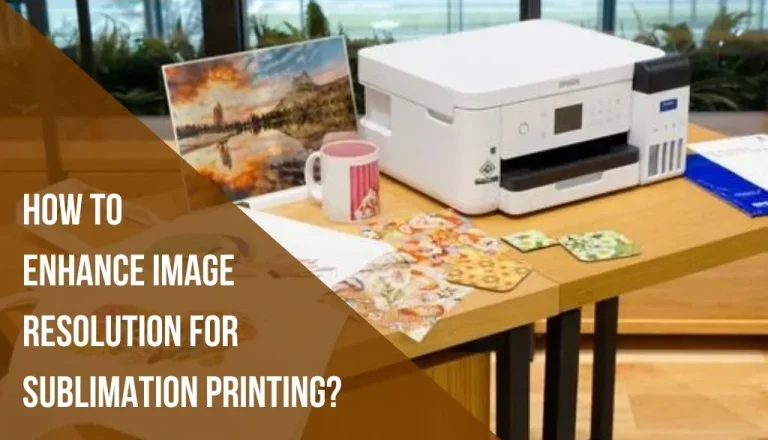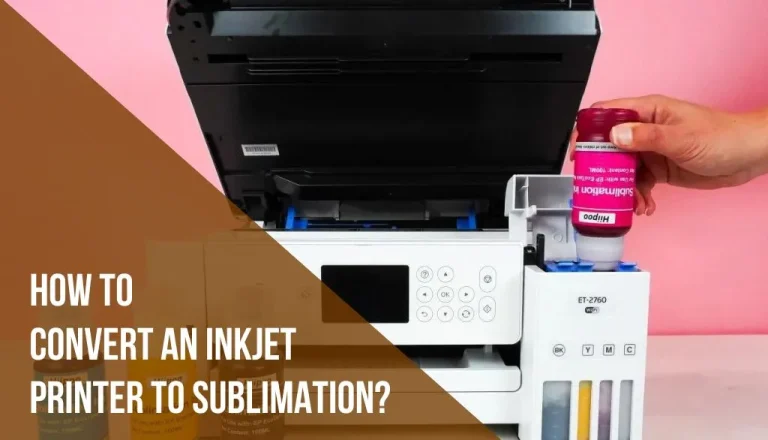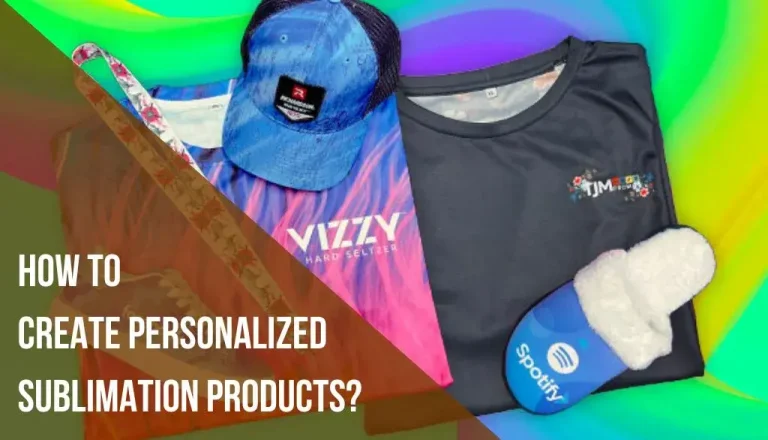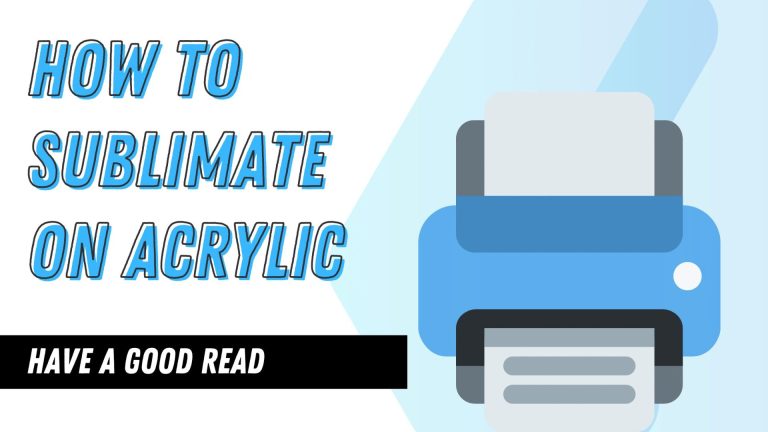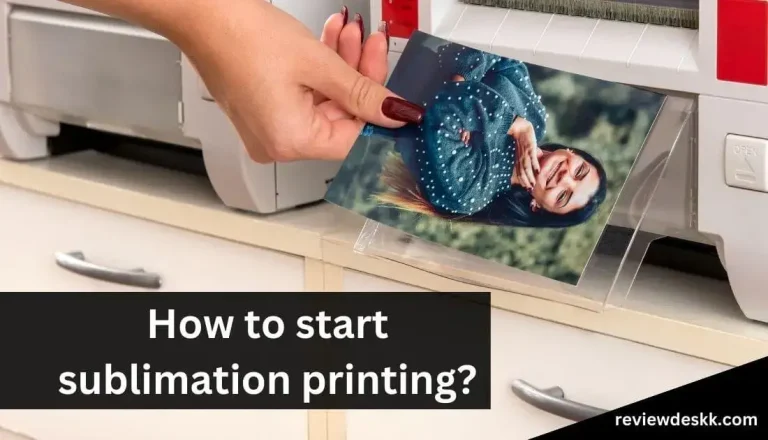How to Sublimate on Cotton Blend Fabrics? A Step-by-Step Guide
The method of sublimation is one of the most popular processes of printing. This process can be done mostly by printing t-shirts mugs or more designs. You can also sublimate on cotton blend fabrics.
In this article, I will explain how to sublimate on cotton blend fabrics screen printing and what are the steps to follow and print on cotton easily.
Can you Sublimate on Cotton Blend Fabric?
By applying special treatment to cotton you can make sure How to sublimate on cotton blend fabrics work on 100% cotton by itself. Several types of heat transfer vinyl can be used in these workarounds, or a special coating can be applied to cotton before it is heated and sublimated.
It is possible to sublimate cotton but not polyester? A sublimation dye becomes a gas as a result of the sublimation process. Polysters synthetic fibers also open up under heat allowing gas to enter.
The dye turns solid as the synthetic fabric cools and the polyester fibers close leaving the dye and the fabric chemically bonded.
To achieve chemical sublimation sublimation dyes must be used with synthetic materials.
You will be able to see the design as soon as you try it on pure cotton. Cotton absorbs dye well so dye will soak in a bit and look nice.
However cotton will wash out of sublimation ink as soon as it touches water because no chemical bonding took place.
This meant that printers and home artists skipped cotton tees and hoodies for a long time. Sublimating cotton shirts has become easier thanks to recent advances in printing techniques.
Compared to synthetic fabrics like polyester cotton fabrics tend to be softer and more breathable. This is why many small businesses and printers prefer cotton for printing t-shirts.
Sublimation Temperature for Cotton
A temperature range of 360°F to 400°F is required for sublimation on cotton. The amount of time required for pressing will vary. The package of your sublimation transfer paper usually indicates the recommended heat press settings and times.
Heat presses are necessary for sublimating. The Cricut EasyPress can be used, but an iron and ironing board will not apply enough heat and pressure to cause chemical bonding.
A temperature range of 360F to 400F is required for sublimation on cotton. The amount of time required for pressing will vary.
How to Sublimate on Cotton Blend Fabrics in 7 steps:
The key to successfully sublimating cotton is to ensure that you use some form of intermediary between the dye and the cotton.
The use of vinyl for this is popular among home artists. Cotton fabrics can also be treated with a special synthetic spray coating.
1. With Vinyl
Siser EasySubli heat-transfer vinyl is an excellent substitute for cotton when sublimating. Sublimating onto just any HTV will not work! For dye bonding to occur with sublimation, you must always use a surface containing polyester.
- You can use any graphic design program to create your digital design.
- Print the image directly onto Siser EasySubli using your sublimation printer. To achieve the best results, Siser recommends using a Sawgrass printer and EasySubli ink.
- Once the printed design is inserted into the cutting machine, the outline will be cut out.
- Vinyl excess should be weeded away.
- Apply a clear masking sheet to the vinyl with a squeegee. With this method, you can lift the vinyl design and carry it to your shirt or cotton garment.
- Make sure the vinyl design on your shirt is aligned.
Siser easily heat transfer vinyl is an excellent substitute for cotton when sublimating. Sublimating onto just any HTV will not work. For dye bonding to occur with sublimation you must always use a surface containing polyester.
- You can use any graphic design program to create your digital design.
- Print the image directly onto Siser recommends using a sawgrass printer and easysubli ink.
- Once the printed design is inserted into the cutting machine the outline will be cut out.
- Vinyl excess should be weeded away.
- Apply a clear design masking sheet to the vinyl with a squeegee. With this method, you can lift the vinyl design and carry it with your shirt or cotton garment.
- Make sure the vinyl design on your shirt is aligned.
- During the heat pressing cover the design with a teflon sheet.
- The heat press should be set at 311F. Vinyl surfaces are best cleaned at a lower temperature than usual.
- Just 15 seconds are needed to press the design.
This method has its advantages and disadvantages. As with any HTV application on cotton, the vinyl feels still and raised on the fabric surface. You can safely wash the shirt after using your heat press to seal the easy sublime to it after the sublimation process has worked.
2. With glitter HTV
Using white glitter HTV home printers were already sublimating on cotton before commercial products like easysubli hit the market.
This market might not be for everyone, but if you like glitter, you should try it out this heat transfer vinyl contains tiny glitter particles that contain palsyter allowing sublimation to take place.
- Start by creating editing or downloading an SVG design.
- To avoid a backward design mirror the design
- You can cut out the design weed the extra vinyl and send it to your electronic cutting machine.
- Follow the directions on the vinyl packaging when applying glitter vinyl to cotton. For about 60 seconds you will need to heat press the vinyl to the cotton at 400F.
- You can proceed to the sublimation phase of this method once the cotton has cooled print your design on a sublimation transfer paper if you have not already done so. To do this you will need a sublimation printer.
- Make sure the printed side of the transfer paper is facing down so it aligns perfectly with the vinyl cut out on the cotton. If you want to keep the design aligned you can use heat-safe tape.
- Heat your press for approximately 60 seconds at 400F.
- Now your shirt should be colorful and glittery.
When sublimating on HTV you need to cut and weed the vinyl before applying the design to the cotton. The upside of this method is that you can use it on every color shirt.
It is only possible to apply glitter HT to white or light colored fabrics but you can also apply it to black or dark colored fabrics.
A compatible design would also require many pieces for each color of vinyl if you used HTV. To create a multi-colored design, you can simply apply ink to white glitter vinyl.
3. With Spray Coating
Sublimating cotton is usually done by applying a synthetic coating to its surface before proceeding to the sublimation process. Some coating sprays such as poly t receive good reviews but they are expensive.
This method requires two applications of the spray. First, the cotton shirt sizing is removed and then a synthetic surface is created for sublimation.
- After spraying the shirt thoroughly allow it to dry for a few minutes
- If you have a clamshell-style press, set it at 330F and cover the lower platen with a cotton towel. The flat pressing surface of a small press should be covered with a cotton towel
- To dry the damp shirt, spread parchment paper over it.
- As the sizing is removed from the cotton shirt, steam will come out.
- The shirt should then be sprayed with a second coat of the spray.
- To set the coating, apply 330°F heat for 30 seconds. As the fabric cools, it should feel plasticky.
- You should place parchment paper or butcher paper underneath the cotton shirt. Your sublimation transfer should be aligned on top of the cotton fabric, then a layer of parchment or butcher paper should be placed over it for protection.
- Allow the sublimation process to take place by setting your heat press to 385°F and applying pressure for 70 seconds.
4. With Sublimation Fabric Sheets
Forever sub-light sublimation fabric sheets mimic the appearance of actual sublimation on polyester fabric the closest. It appears the dye has sunk into the fabric because these lightweight sheets do not form a thick barrier like HTV.
Using these fabric sheets eliminates the need to cut out complex HTV patterns.
- Colorful vector designs can be created or downloaded. If you are printing the design make sure it is mirrored.
- The blank side of the fabric sheet should be placed face down in the sublimation printer and the design should be printed on it.
- Make sure your shirt is pre-pressed for 15 or 20 seconds before wearing it.
- Your design will be created on a smooth wrinkle-free surface.
- Use parchment paper or a silicone pressing mat to cover it
- 365F should be used for 30 seconds of pressing
- Hot transfers should be peeled away as soon as possible
- A finishing paper should be applied immediately and pressed for 30 seconds again. For a permanent seal, you can choose matte or glossy finishing papers.
It is important to use very bright vector designs when using these fabric sheets. you can check your printer’s CMYK color value to ensure they have at least 150%. To make this method work you need bright bold colors.
5. On dark cotton
Sublimation designs can be created on dark cotton using white HTV glitter and siser easysubli. Read the sections above for step-by-step instructions on using these two methods.
Adding a white background is possible with the medium between the sublimation and cotton. Sublimating directly onto polyester fabric doesn’t allow you to apply colorful designs to dark or black fabrics.
6. With Cricut
A circuit can be used to sublimate with glitter HTV shapes using a sublimation transfer paper over the glitter
It is probably not a good idea to create a multi-colored bright design with vinyl. It would be necessary to cut out the pieces in different colors of vinyl and then put them together like puzzle pieces. If printers want to use vinyl on shirts they typically use one two or three-color HTV designs.
A variety of colors of vinyl would have to be cut out and then they would have to be put together similarly to a puzzle. A variety of colors of vinyl would need to be cut out and then the pieces would have to be assembled.
Inorder to put the pieces together they must be cut out in different colors and then put together.
You can use your circuit for sublimation by following these tips.
- Use white glitter HTV containing polyester to create a glitter look. Consider purchasing glitter HTV made specifically for sublimation or reading the product descriptions carefully.
- Infusible Ink is also available from Cricut. HTV sublimation can be easily mastered if you buy supplies from Cricut.
- The Siser EasySubli vinyl product works well with specific printers like the Sawgrass models and gives excellent results because it is designed specifically for sublimation printing.
7. With Silhouette
It uses heat transfer vinyl to cut out shapes for sublimation printing on cotton, similar to a Cricut machine.
There is a great reputation among crafters for Brother’s Silhouette electronic cutting machines. Furthermore, you can design your sublimation print designs with a program called Silhouette Software.
- When you have your design ready to go, you will create a transparent outline for cutting and leave one image in full color for printing. With the Silhouette program, you can easily do this.
- Mirror your lettering if your design contains any.
- Utilizing your Silhouette, cut out the shape on white HTV.
- Apply the vinyl to your shirt using your heat press according to the instructions on the HTV package.
- Use a Sawgrass sublimation printer to print the color design onto sublimation transfer paper.
- The temperature of your heat press should be set at 400 degrees Fahrenheit.
- Ensure that the printed side of the transfer is facing down when placing it on top of the vinyl.
- The transfer paper should be protected with a Teflon sheet.
- The heat press should be applied for one minute.
Will Sublimation Wash Out of Cotton?
Untreated cotton will wash out sublimation transfers if you seal them. Cotton fibers cannot chemically bond with synthetic sublimation dyes.
In addition, cotton can be sublimated with a synthetic surface. Cotton sprayed with a coating spray or vinyl sprayed with HTV will sublimate and the dye will not wash out.
Frequently Asked Questions:
Cotton spray, sublimation, coating, polyester shirts, or htv dark can be sublimated. The best results will be achieved with white polyester T-shirts, such as those from Cricut, which are at least 65% polyester. When you wash a poly blend shirt, the design may lose its vibrancy.
In order to know How to sublimate on cotton blend fabrics? Sublimation is achieved by inserting the transfer paper into a heat press. Before printing, all fabrics should be tested, but sublimation generally takes place between 380 – 400 degrees for 20 – 35 seconds.
Press the button when you are ready. Upon completion, you should have a picture-perfect image without transfer lines. We are not surprised by this. When sublimated to blended shirts, the colors will be less vibrant than when sublimated to 100% polyester.
Final Verdict:
In addition to heat-transfer vinyl, glitter HTV, spray coatings, fabric sheets, and cutting machines such as Cricut and Silhouette, sublimation is possible on cotton and cotton blend fabrics through various methods.
Despite the challenges associated with How to sublimate on cotton blend fabrics? sublimating directly onto 100% cotton, these workaround techniques allow vibrant and durable designs on cotton garments.
To prevent dye washout, the right method must be chosen, bright vector designs should be used, and proper sealing procedures must be followed.
Using sublimation on cotton offers a soft, breathable feel, and recent advancements in printing have made it more accessible for crafters and printers looking to create custom, colorful designs.

